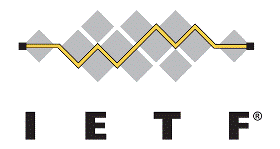Behavior Engineering for Hindrance Avoidance (behave)
Interim Meeting of June 21, 2012
Additional information is available at tools.ietf.org/wg/behave
Chair(s):
Transport Area Area Director(s):
Transport Area Advisor
|
Meeting Slides:
No Current Internet-Drafts
No Request for Comments
Charter (as of 2012-06-21):
The working group creates documents to enable IPv4/IPv4 and IPv6/IPv4
NATs to function in as deterministic a fashion as possible.
To support deployments where communicating hosts require using
different address families (IPv4 or IPv6), address family translation is
needed to establish communication. BEHAVE will coordinate on this topic
with the V6ops WG on requirements and operational considerations.
"An IPv4 network" or "an IPv6 network" in the descriptions below refer
to a network with a clearly identifiable administrative domain (e.g., an
enterprise campus network, a mobile operator's cellular network, a
residential subscriber network, etc.). It will also be that network that
deploys the necessary equipment for translation.
BEHAVE will finish four scenarios: (1) An IPv6 network to IPv4
Internet, (2) an IPv6 Internet to an IPv4 network, (3) an IPv6 network
to an IPv4 network, and (4) an IPv4 network to an IPv6 network.
Specifically, BEHAVE will update the NAT MIB (RFC 4008) to be
consistent with the management aspects of its IPv6/IPv4 NAT solutions,
and specify IPFIX information elements to meet logging requirements,
reusing existing elements, if possible.
In addition, when a NAT (such as a NAT64 in the "An IPv6 network to
IPv4 Internet" scenario) serves multiple subscribers, inter-subscriber
fairness issues arise. As such, BEHAVE will complete its work on
Carrier Grade NAT requirements for such scenarios, and update the NAT
MIB as needed to meet such requirements. BEHAVE will not, however,
standardize IPv4-specific behavioral mechanisms.
The following scenarios remain in scope for discussion, but will not be
solved by BEHAVE:
* An IPv4 network to IPv6 Internet, i.e. perform translation between
IPv4 and IPv6 for packets in uni- or bi-directional flows that are
initiated from an IPv4 host towards an IPv6 host. The translator
function is intended to service a specific IPv4 network using either
public or private IPv4 address space.
* IPv4 Internet to an IPv6 network, i.e. perform translation between
IPv4 and IPv6 for packets in uni- or bi-directional flows that are
initiated from an IPv4 host towards an IPv6 host. The translator
function is intended to service a specific IPv6 network where selected
IPv6 hosts and services are to be reachable.
This group will also provide reviews of any work by the MBoneD WG on
multicast translation, including control traffic (IGMP and MLD), Single
Source Multicast (SSM) and Any Source Multicast (ASM).
If the WG deems it necessary, BEHAVE will revise RFCs previously
published by BEHAVE.



